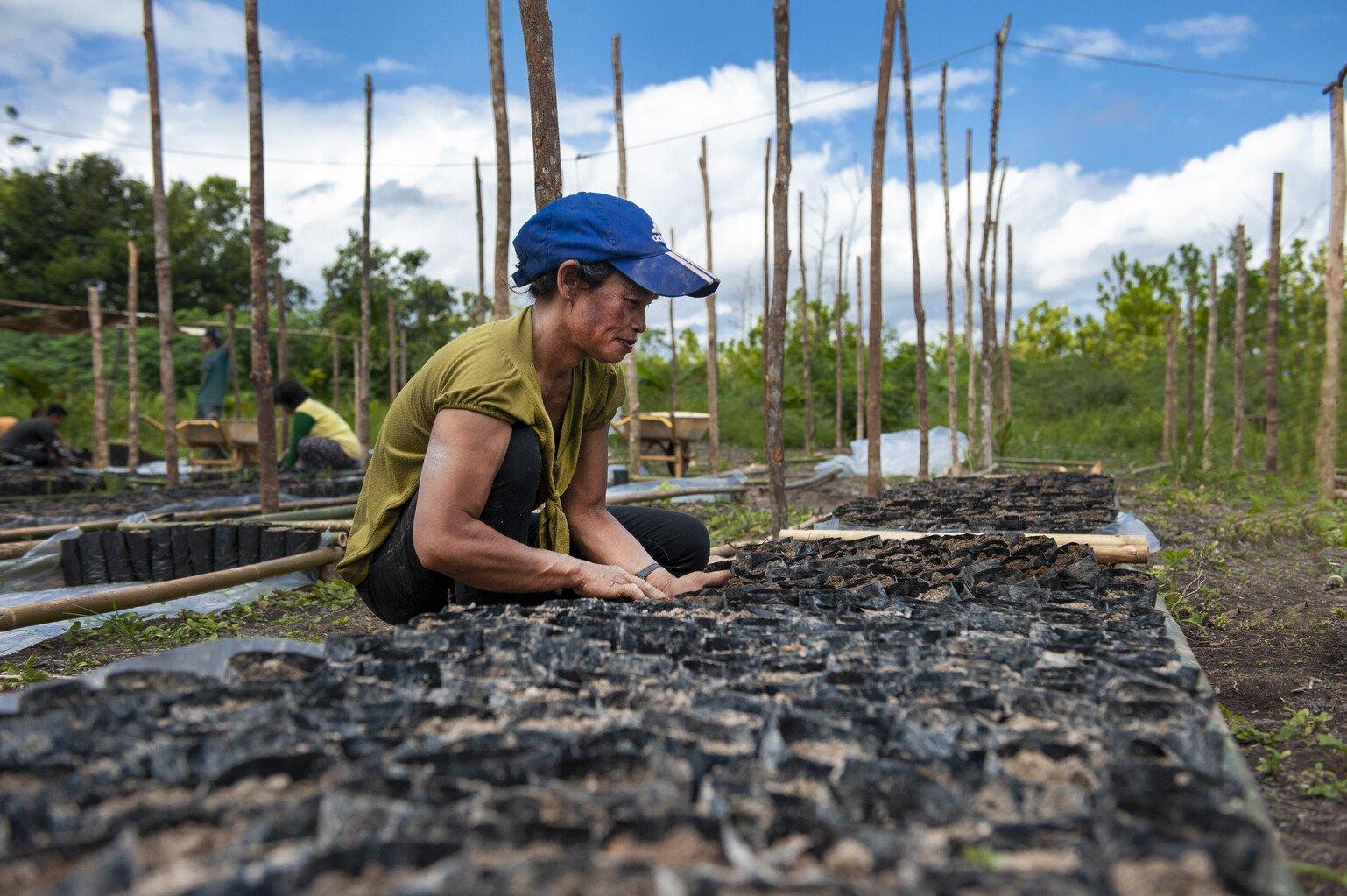
Five real-world examples of how climate mitigation can benefit health
Climate mitigation has the potential to protect and improve people’s health, as well as reduce emissions. We look at five solutions from around the world and across different sectors that have done just that.

Staff members planting seedlings at Health in Harmony's reforestation centre in West Kalimantan, the Indonesian part of the island Borneo. This work will eventually help restore rainforests in Gunung Palung National Park and surrounding communities.
Stephanie Gee / www.stephaniegee.com
Climate change poses many health threats to people around the world, from the spread of diseases to food and water insecurity.
But climate mitigation can help minimise these impacts. That includes actions to reduce reliance on fossil fuels by using clean, renewable energy. It also involves transitioning our current food, transport and housing systems to more sustainable ones.
Making these changes can also bring many substantial health benefits.
Here, we share five examples from The Lancet Pathfinder Commission report – funded by Wellcome – that show how climate mitigation actions can protect and improve people's health.
1. Shifting to healthier transport in New Zealand
Transport is one of New Zealand’s largest sources of emissions and the number of trips involving walking and cycling in the country is declining.
To counter this, New Zealand’s central and local governments launched the Model Communities Programme in 2010. The initiative focused on promoting cycling and walking, as well as improving infrastructure in the cities of New Plymouth and Hastings. It built new cycle lanes and parking, developed cycle training programmes and launched media campaigns.
Analysis showed that the programme successfully encouraged cycling and walking for shorter car trips. This shift in transport helped cut back 1,150 tonnes of CO2 emissions between 2011 and 2013. It also led to substantial health benefits and a fall in injury rates. These benefits were found to far outweigh the cost of investing in cycling and walking, with NZ $11 worth of health benefits gained for NZ $1 spent.
2. Transitioning to renewable energy in the US
The US significantly increased its use of renewable energy between 2005 and 2016 and made several changes to its power sector. This led to lower levels of CO2 emissions and air pollution and, consequently, fewer air pollution-related deaths and hospitalisations.
Increasing solar and wind power generation helped avoid 147 metric tonnes of CO2 emissions in 2015 alone. And, between 2007 and 2015, it helped avoid an estimated 3,000 to 13,000 premature deaths. This shift to renewable sources of energy was estimated to benefit the economy between US $30 billion and more than $100 billion.
The rate at which fossil fuels are being replaced by clean energy varies greatly between states. If all states implement actions to transition to clean energy, the potential health benefits could be greater.
3. Switching to low-emission vehicles in Japan
Many environmental issues in Tokyo, Japan, have been caused by the rapid industrialisation and use of cars since the economic boom that followed World War Two. About 20% of Tokyo’s CO2 emissions are caused by the city’s transport sector, and automobiles make up 78% of this.
To counter this, the Tokyo Metropolitan Government has introduced several measures to protect the environment, including the Vehicle Emission Reduction Program. The initiative, launched in 2001, made it mandatory for businesses with 30 vehicles or more to set plans to be more environmentally friendly. One way of doing this was switching to low-emission, fuel-efficient vehicles.
More than 1,500 businesses created five-year plans and annual reports in response to the programme. In total, there was a reduction of 440,000 tonnes of CO2 produced by the participating businesses in the financial year 2021 compared to 2016. Initiatives like this could greatly reduce emissions and improve air quality for the city’s residents.
4. Improving household energy efficiency in Australia
The Victorian Healthy Homes Program in Australia set out to understand the impacts of upgrading household energy efficiency on people’s health and quality of life.
As part of the study, 984 low-income houses across western Melbourne and the Goulburn Valley were upgraded between 2018 and 2020. The upgrades focused on keeping houses warm during winter, including installing insulation, draught-sealing and window coverings. The study found that minor upgrades to homes, at an average cost of AUS $2,809 per household had wide-ranging benefits.
It resulted in lower gas use, which reduced emissions as well as the cost of energy bills. There were also several health benefits – from reduced breathlessness to improved mental health.
5. Protecting forests by meeting community needs in Indonesia
More than 60% of protected lowland forests were lost to illegal logging in West Kalimantan, Indonesia, between 1985 and 2001. The non-profit Health in Harmony consulted with local communities to find out why. They learned that in order to pay for healthcare costs, many people had to resort to illegal logging. This included the cost of the healthcare itself, as well as travelling to use services, paying for food and housing, and loss of income while off sick from work.
To respond to the community’s needs and protect the forests, the non-profit launched a local health clinic in 2007 in partnership with the district government and national park management. The clinic accepted non-cash payments, such as seedlings and handicrafts, and provided discounts on care based on the volume of logging in a patient’s community. To create lasting impact, conservation programmes were also set up and educational activities and training on sustainable livelihoods were offered.
Over 28,400 people accessed the clinic, and the intervention resulted in a 70% reduction in deforestation.
These case studies show that climate change mitigation presents a real health opportunity across many sectors. And, if governments implement more actions like these at scale, they could help secure a liveable future for all.
How is Wellcome working to mitigate climate change?
We funded The Lancet Pathfinder Commission report, where these five examples of how climate mitigation actions can protect and improve health came from. We’re continuing to support the next phase of the Commission which will bring together a coalition of partners committed to implementing and evaluating action on climate and health.
We’ve also awarded £17.6 million to research projects that will support policymakers in G7 countries to incorporate health into climate change mitigation policies.
We’re funding vital research into the impact climate change has on human health around the world, at national, regional and global levels.
There are currently no open funding opportunities for Climate and Health. Learn more about the funding we provide.

